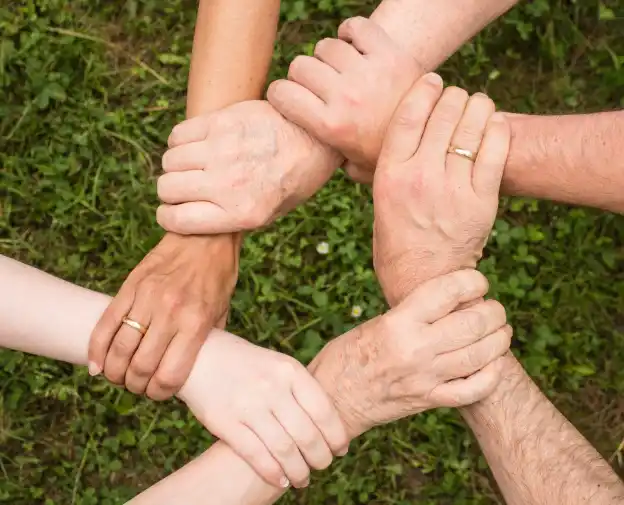My husband saw another adolescent athlete with surgically soft bones. (Back in 2019, I wrote my first post on “crumbly bones.” You can read that post here: Crumbly Bone Alert.) He has to drill holes and put anchors, screws, nails, and pins into bone for what he does, so he sees first-hand whether someone has good bone integrity or not. And increasingly he is seeing normal-appearing, healthy-looking kids with soft bones. Even more distressing is that these kids are high school athletes. They should have strong bones, not soft, flimsy bone.
It’s bad enough when he sees middle-aged women with soft bones, but even more ominous when it’s active kids with no known risk factors. Once, when probed about diet, the mom of one of these youths with weak bones frustratedly replied that her child would only eat two very specific processed, boxed foods. The mom had encouraged other foods to no avail.
Kids Bones are Suffering
“Crumbly bones” are increasing in our kids. In 2003, a study out of Rochester, Minnesota (USA) looked at the occurrence of forearm fractures in youth and found that boys were 32% more likely to have a fracture when compared to the past 30 years, and girls were 56% more likely (Khosla, 2003). Often-times, these changes of “soft” bone cannot usually be seen with the classic DEXA scan, so it’s not even seen readily with our normal bone density evaluations (Kalkwarf, 2011). And since a broken bone here or there is considered somewhat a normal right of passage for kids, unless the break occurred with exceptionally little incidence, there will be no medical instruction on unhealthy bones and how to take care of the skeletal system with diet and exercise. Doctors and parents aren’t thinking about “crumbly” bones in an otherwise normal, healthy kid.
I guess what I’m trying to say is that this is probably a silent epidemic. That lots of youth probably have poor bone integrity, and we just aren’t catching it.
It’s Not too Late to Start Strengthening Bones at Any Age
But this post isn’t just about kids. Yes, it’s better to play “keep up” with bone integrity than “catch up,” but I have read reports of osteoporosis improvement in elderly patients, either with regard to bone mineral density or with decreased fracture risk (Iwamoto, 2014; Shanb, 2014). There are things you can do now to make bones better.
Today I will touch on vitamin K2, which I mentioned in the first post linked to above.
VITAMIN K2
Bones need vitamin K2 to be healthy. You may also see vitamin K2 referred to as MK-4 (menaquinone-4) or MK-7 (menaquinone-7), the different numbers identify slightly different chemical forms of the same vitamin. (There are even more numbers/forms than this, eg MK-9 or MK-11, which may or may not be important. There are not enough studies yet to know.)
Vitamin K1 and Vitamin K2 Have Different Roles So Don’t Think of Them as the Same
Vitamin K2 should NOT be confused with vitamin K1. (And neither vitamin should be confused with potassium, an important electrolyte whose symbol is a simple “K” on the periodic table.) Vitamin K1 and vitamin K2 are both very, very important, but the expanse of their jobs differ. When you read, you will undoubtedly see vitamin K1 and vitamin K2 lumped together, which is a real travesty. They have different roles and both are needed.
Vitamin K2 Helps Hearts, Blood Vessels, Brains, and Bones
Vitamin K2 is a vitamin which scientists somewhat recently recognized–or at least recognized the significance of. Many American doctors will not even know about it, even though in Japan they have been using high dose vitamin K2 supplementation for osteoporosis treatment for years. (Iwamoto, 2014) Vitamin K2 has profound effects on our blood vessels, brains, bones, immune system [Linneberg (2021) even showed it affected Covid outcomes], and skin.
With regard to bone, Vitamin K2 helps take calcium and put it in bones and teeth. It keeps calcium out of the lining of our blood vessels (think of cardiovascular disease with the calcified plaques blocking blood flow) and tissues and puts it where it belongs.
How Does the Body Get Vitamin K2?
You can get vitamin K2 through different mechanisms. The really confusing thing about vitamin K2 is that its content in foods is unreliable and unpredictable. And some foods might have MK-4, while others have MK-7. And still others might have some of the lesser studies forms of vitamin K2 like MK-9 or MK-10.
Adding to the confusion is that you’ll see some researchers swear by MK-7, while others say MK-4 is fine. It’s often quoted that MK-7, which is found in plant sources of vitamin K2, has a longer half-life and sticks around longer, so it’s better. Others argue that MK-4 is what is present in all animals (so, of course, that’s what we should use), and that it does not stay in the blood because it is “sucked up” by our tissues.
I don’t know. My consensus is to look at the vitamin K2 food list and try to add those foods in. Try to eat more vegetables. And supplement as needed.
Your body gets vitamin K2:
By eating egg yolks, butter, certain cheeses, organ meats, fish eggs, and fermented foods (like sauerkraut or a Japanese food called natto). The problem here is that a food type can have differing levels of vitamin K2 amounts, depending on what an animal is eating or how a cheese is made. So “Brand A” of butter may have less vitamin K2 than “Brand B.” And “Brand A” may have a different vitamin K2 in May than it does in August because the cow is grazing on different grass quality. Vermeer (2018) has a great article with vitamin K2 levels of various foods. Check it out. Chris Masterjohn, PhD, has an extensive page on vitamin K2 and has a spot where you can type in the food to see how much vitamin K2 is in it. Check it out.
By converting excess vitamin K1 to vitamin K2: The human body can convert excess vitamin K1 to vitamin K2. The problem with this is that most humans do not eat enough vegetables and leafy greens to even get enough vitamin K1 for optimal health, so there isn’t much, if any vitamin K1 leftover to turn into vitamin K2. A second confounder is that different people have different processing capabilities, so some people might have “good” genes for vitamin K1 conversion while others do not. A third confounder is that vitamin K1 is best absorbed with fat, and many health-conscious people are low fat.
By your gut bacteria: Your gut bacteria can make vitamin K2. The problem here is the disrupted gut bacterial flora that is very common now, contributed to by antibiotics and poor diets.
By vitamin K2 supplementation: Different formulations can degrade over time, leaving uncertain vitamin K2 levels (Orlando, 2019).
What’s a Person to Do?
So if vitamin K2 is that important, and yet our available sources are that unpredictable, then what’s a person to do? Throw hands up in the air and say, “Life sucks. This is stupid. I can’t do this anymore?” NO! Regularly include the sources you can food-wise. Do what you can! If you can’t eat these things, look at lists and see what you can eat to get K2. If you can’t eat anything, then supplement. Read all about vitamin K2 (the Masterjohn site I linked to above is exceptionally extensive and easy to read).
Eat more egg yolks.
Use butter.
Eat more vitamin K1-rich leafy greens and vegetables. Cook them with butter or olive oil to absorb more vitamin K1 to potentially convert to vitamin2.
Order sushi with salmon roe or some other roe.
Use cheese. Different cheeses have different K2 levels, so check out the lists.
Eat fermented foods like sauerkraut or kimchi.
FInd some vitamin K2-rich foods and eat some daily for your bones. Feed them to your kids for their bones. Every choice. Every day. Adds up.
Terri F
NOTE: Those on warfarin (Coumadin) should not increase their vitamin K2 (including from foods) without a doctor monitoring them closely.
Citations:
Khosla, S., Melton, L. J., Dekutoski, M. B., Achenbach, S. J., Oberg, A. L., & Riggs, B. L. (2003). Incidence of Childhood Distal Forearm Fractures over 30 Years: A Population-Based Study. Journal of the American Medical Association, 290(11), 1479-1485. https://doi.org/10.1001/jama.290.11.1479
Kalkwarf HJ, Laor T, Bean JA. Fracture risk in children with a forearm injury is associated with volumetric bone density and cortical area (by peripheral QCT) and areal bone density (by DXA). Osteoporos Int. 2011;22(2):607-616. doi:10.1007/s00198-010-1333-z
Iwamoto J. Vitamin K₂ therapy for postmenopausal osteoporosis. Nutrients. 2014 May 16;6(5):1971-80. doi: 10.3390/nu6051971. PMID: 24841104; PMCID: PMC4042573.
Shanb AA, Youssef EF. The impact of adding weight-bearing exercise versus nonweight bearing programs to the medical treatment of elderly patients with osteoporosis. J Family Community Med. 2014;21(3):176-181. doi:10.4103/2230-8229.142972
Linneberg A, Kampmann FB, Israelsen SB, Andersen LR, Jørgensen HL, Sandholt H, Jørgensen NR, Thysen SM, Benfield T. The Association of Low Vitamin K Status with Mortality in a Cohort of 138 Hospitalized Patients with COVID-19. Nutrients. 2021; 13(6):1985. https://doi.org/10.3390/nu13061985
Orlando P, Silvestri S, Marcheggiani F, Cirilli I, Tiano L. Menaquinone 7 Stability of Formulations and Its Relationship with Purity Profile. Molecules. 2019;24(5):829. Published 2019 Feb 26. doi:10.3390/molecules24050829
Vermeer C, Raes J, van ‘t Hoofd C, Knapen MHJ, Xanthoulea S. Menaquinone Content of Cheese. Nutrients. 2018;10(4):446. Published 2018 Apr 4. doi:10.3390/nu10040446





